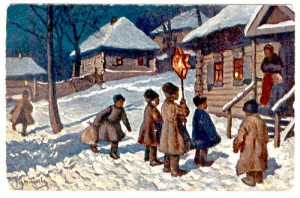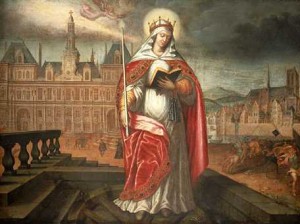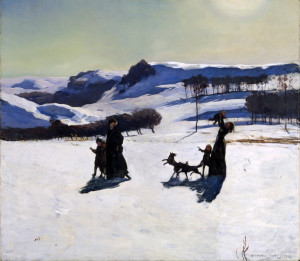TWELFTH DAY of CHRISTMAS:
Epiphany
E l’epifania tutte le feste porta via! This is an old Italian saying that translates to “And with Epiphany all the holidays are over.” And so they are…until the next one, of course (and you can be sure I’ll have something interesting for you tomorrow).
But with Epiphany, the Christmas festivities come to an end. Epiphany marks the day the Magi arrived at the Bethlehem stable to see the child that was born. Their journey, following that star, is said to have taken twelve days…the same as our journey through the Christmas season. They sought the child of wonder and so have we. They crossed the desert land and we crossed from one year to another.
We know very little about the three kings we celebrate today. We don’t even know if there actually were three; three, nonetheless, is a solid, stable, number. Most of what we know is handed down through tradition, which tells us that the Magi were three wise men from the East, named Caspar, Melchior, and Balthasar, and that they brought three gifts to the child: gold, frankincense, and myrrh, all of which have rich and varied symbolic meaning. These were gifts fit for royalty, but also refer to the child’s future roles: Gold for kingship, frankincense for the priesthood, myrrh for death and burial.
While Twelfth Night generally is the last of the raucous Christmas revels, often with a Lord of Misrule and a King of the Bean and a Queen of the Pea and all of the ensuing fun madness, Epiphany, today, is generally a quieter time. I think this is because we are actually saying goodbye to an old friend: Christmas has come to stay with us these two weeks past, and now the guest must be on his way. For some of us, Christmas is a guest we look forward to showing the door early on in the visit, but for others, like those in this house, the closing of Christmastide is full of mixed emotions. Yes, it’s nice to get back to order and routine, but we know we’re going to miss what sets Christmas outside of ordinary time. Once Epiphany is done and la befana has swept the remnants of Christmas away, there will be considerably less magic present. We have to wait another year for the twinkling lights of the winter solstice to return, along with the intoxicating scent of balsam and cloves and the wonderful tastes of Yule and the songs we get to hear and sing just at this time of year.
In some traditions, Christmas continues all the way to Candlemas Eve, the First of February. There is some strong basis for this in the Pagan tradition, as it is on the First of February that Yule gives way to Imbolc in the wheel of the seasonal round: it is a cross-quarter day, the midway point between the winter solstice and the spring equinox.
But for most of us, Christmas ends now, and the greenery and decorations are supposed to come down with Epiphany, too. There is old belief that for as much greenery that remains in your home after Epiphany, you will have that many goblins move in to your home to spend the next year with you. Whether you believe in that or not, most people will remove the Christmas decorations tonight or soon thereafter. Greenery from nature should be returned to nature. If you have room in your garden to keep the old Christmas tree for a year, do so. We tuck ours in a quiet corner, near the bamboo and the mango tree, and come next Winter Solstice, the tree will fuel our celebratory fire for that darkest night of the year as we welcome Yule once again. This act, which has become our tradition, is so much more respectful to your tree than tossing it out at the curb for trash.
We close the celebration of Christmas on Epiphany night with a simple ceremony at the front door, outside on the front porch. We will gather up all who are in the home and we will each take turns writing with chalk on the lintel above the front door the numbers and letters and symbols of a traditional inscription. This year, it will read as follows: 20+C+M+B+15. These are the initials of each of the Magi, punctuated by crosses, blanketed on either side by the year. For me, the inscribing is always accompanied by a silent prayer that no one will be missing when we gather next to write this same inscription. In some places, or in earlier times, the inscription might be written by the Star Boys, like those pictured in the old postcard above. Here in Lake Worth, we haven’t many Star Boys, and all the same, I’m happier that we get to write it ourselves, each letter and number in handwriting I recognize, the hands of the people in this house. All the year through, though Christmas be gone, still the inscription is there to remind us of Christmas’s presence as we pass each day through that portal. The inscription is a magic charm of sorts, protecting the house and those who pass through that doorway, harboring the goodwill and spirit of Old Father Christmas.
Image: A postcard depicting the Star Boys’ Singing Procession, an Epiphany tradition in Russia, Scandinavia, and Central Europe, c.1916. [Public domain] via Wikimedia Commons.


